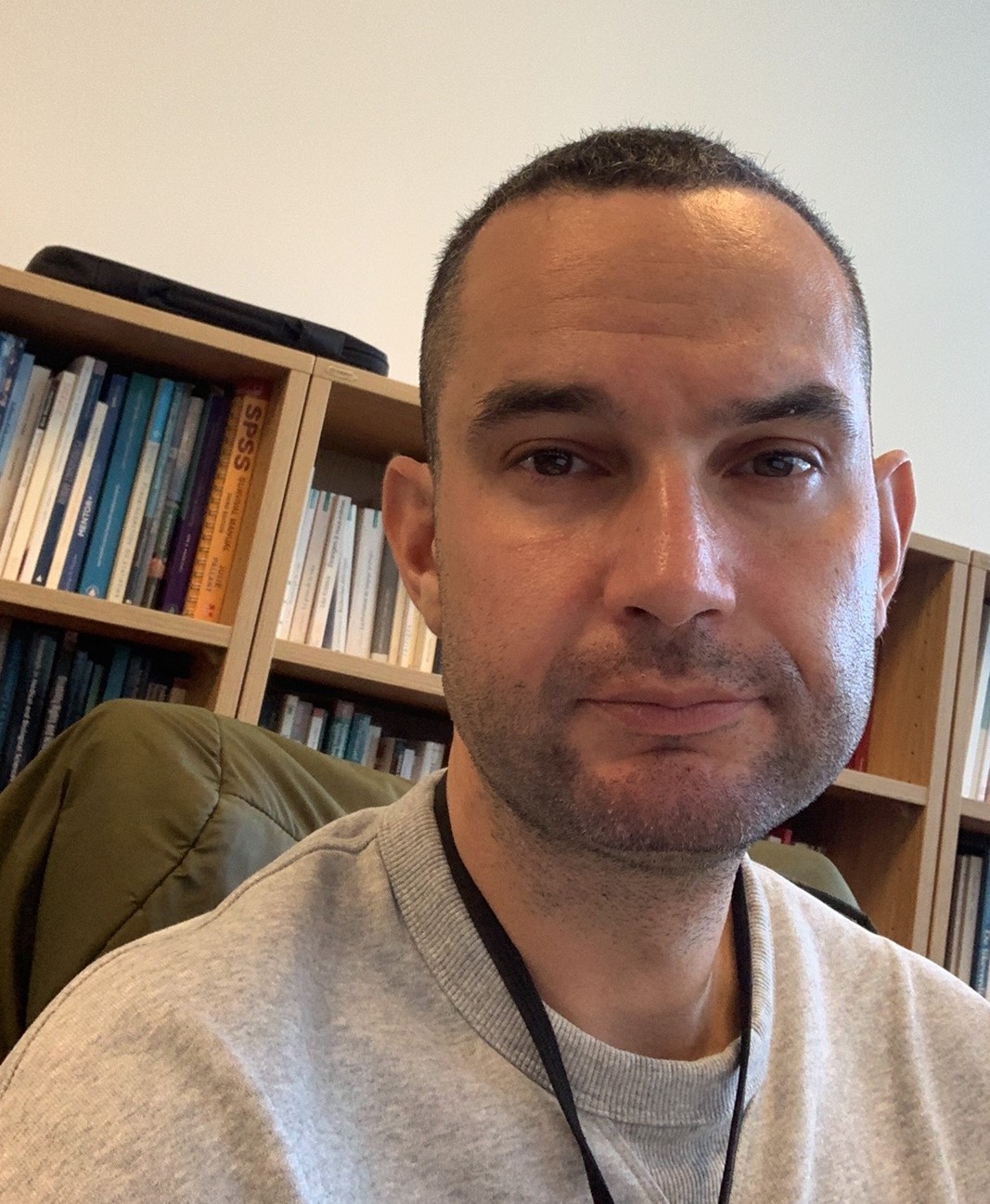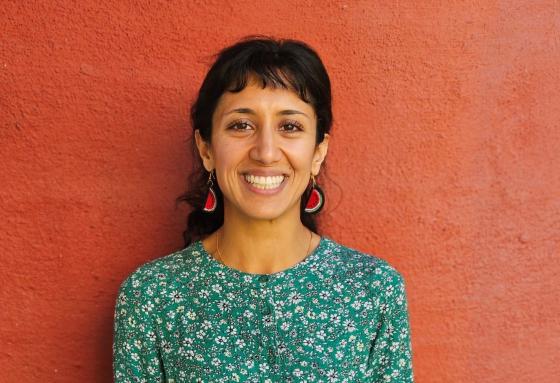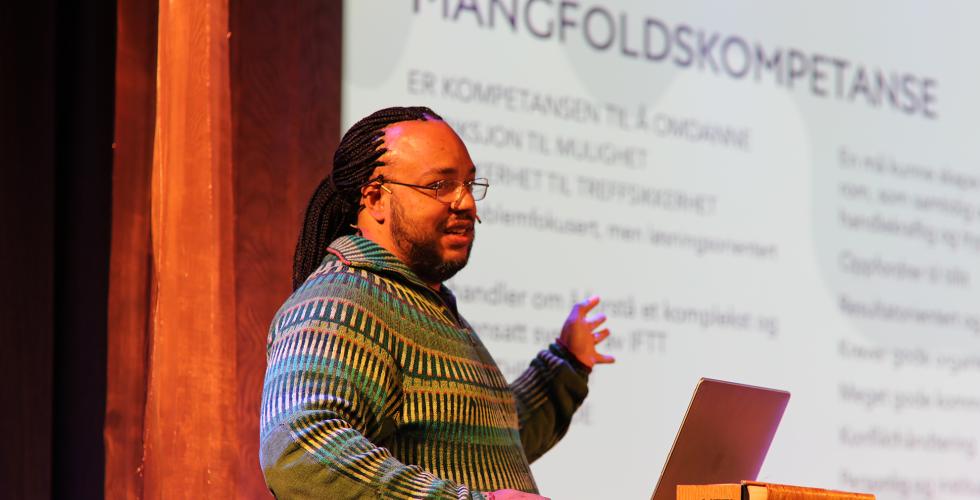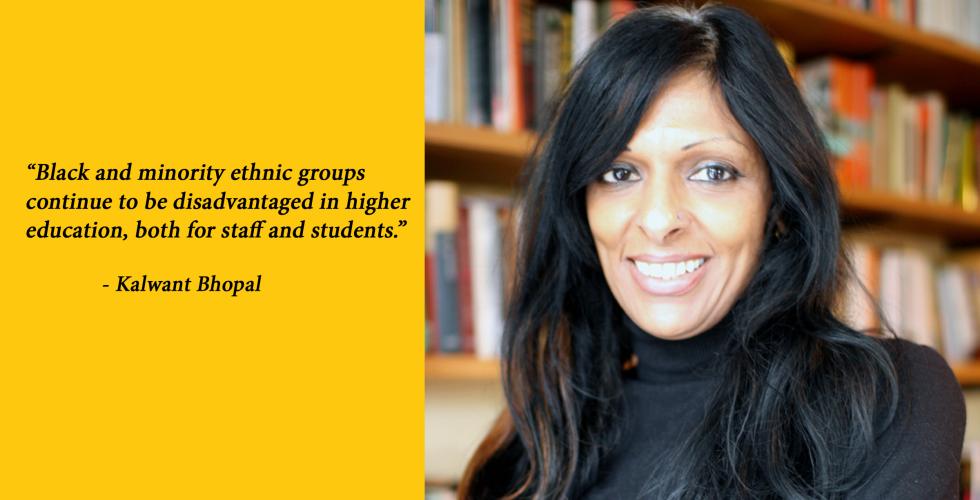“Racism poses a threat to public health”
Racism and discrimination are bad for public health. That’s according to the staff and students at the Faculty of Medicine at the University of Oslo. They are now taking steps to prevent discrimination.
A rare scenario in academia: Staff and students got together and set an evening aside to discuss the faculty's work against racism.
Kifinfo wanted to know more about the driving force behind the initiative at the Faculty of Medicine at the University of Oslo (UiO).
“Not just a problem at a societal level“
“There are six people in the group, but I’m happy to give you my opinion,“ says Davina Kaur Patel.
A couple of years ago, she helped bring together a small group of students and research fellows. It became the Working Group on Racism, Discrimination and Health at the Institute of Health and Society (Helsam).
Research fellow Patel talks about her strong personal motivation on the topic of racism and discrimination.
“I’m British and have a multicultural background. I’ve lived in Norway for eight years and have worked in healthcare for four years.”
“I have experienced racism and discrimination firsthand and it made me wonder: is it because of my skin colour, is it gender discrimination, or what?“
She began working as a senior lecturer in community medicine and global health two years ago and is now taking a doctorate at the same institution.
“A number of my colleagues raised the issue that there was very little knowledge and teaching about racism in medical school. They all had anecdotes about racism and discrimination, either as research fellows, medical students or postdoctoral fellows, and also as employees.”
“We have regular discussions in the working group about what’s happening and what measures are in place,“ she says.
Racism and discrimination were not previously part of the learning objectives in medical education, but in 2020, new regulations were adopted (in Norwegian only) that state that students need to learn more about how racism affects public health, Patel explains.
“At UiO, the topic was placed within the context of community medicine and was interpreted as a social problem, but that does not take account of the experiences of the medical students themselves, who experience a wide range of racism and discrimination.”
“Doctors, for example, can experience discrimination from patients and other healthcare workers. It is not enough to talk only about remarks that are clearly racist – we also need to think about structures, actions and microaggression,” says Patel.
“And that's not something we can just fix by just giving a lecture!”
Patel believes that one of the major challenges is how to effectively map and report racism and discrimination.
“Know nothing about racism and discrimination among doctors”
The Norwegian Nurses Organisation (NNO) has been good at mapping racism and discrimination among its members, Patel believes. She explains that NNO’s work (in Norwegian) inspired the working group at Helsam to contact the Institute for Studies of the Medical Profession, and they now hope that they will include questions about this in their next membership survey.
“Racism and discrimination experienced by doctors has never been systematically mapped in Norway, so we have no information about it.”
“Nurses have come much further in this work, possibly because they are more vulnerable, as they have more patient contact and are lower down in the power hierarchy at hospitals,” says Patel.
As an example, she points out that Lovisenberg Hospital has addressed racism and discrimination against bioengineers. There were, among other things, a number of cases of patients not wanting bioengineers wearing a hijab or with dark skin to take their samples. The hospital therefore ran a campaign with posters about zero tolerance for discrimination and introduced training with clear rules about what employees should do if they experience discrimination.
The working group is now holding discussions with the faculty about starting to map the extent of racism and discrimination within the organisation, Patel explains.

Tony Sandset, researcher and chair of the Committee for Gender Equality and Diversity (LIM Committee) at the Faculty of Medicine, stresses that racism and discrimination are not unique to the university but are a phenomenon in all areas of society.
“The university needs to prevent cases of discrimination, map the scope of the problem and have effective methods for reporting it,” he says.
Sandset refers to the recent work environment survey (ARK) at the university (in Norwegian) in which people have reported ethnic discrimination.
“Even one case of racism and discrimination is one too many. I have a multicultural background and have long been concerned with equality and diversity, especially ethnic diversity.”
“As professionals, doctors perhaps have the same experience as other professional groups such as teachers and nurses, in that they experience racism and discrimination from two different groups – both from students or patients and from colleagues.”
“It is therefore important that the faculty discusses these issues, as they are doing now,“ says Sandset.
“Just as difficult to report racism as sexual harassment”
Patel believes that reporting discrimination is a complicated matter.
“Although many people experience racism and discrimination, it’s not so easy to prove and it may be difficult to report.”
“Some people say that they have spoken about incidents they have experienced, but that colleagues recommend that they don't report them. Others don’t want to report it because they don’t believe reporting such incidents will achieve anything.“
Patel believes that one of the difficult things about the whistleblowing system is that the people reported are notified of the report, making it easy to trace who reported a specific incident.
“In practice, this makes it just as difficult to report racism and discrimination as it is to report sexual harassment.”
There are many factors that make whistleblowing difficult, and Patel emphasises that:
“There are significant power hierarchies, particularly in medicine. People are worried about not being offered a job or a residency, because there aren’t enough places. That can force people to remain silent.“
Sandset agrees with Patel about the importance of further developing the whistleblowing systems.
“Many people also don’t understand how the whistleblowing systems work, regardless of whether they want to report sexual harassment or racism and discrimination.“
He believes the most important thing is to reassure staff and students, so that they always know what to do if they want to report an undesirable incident.
Anyone reported needs to know what the report concerns and be given the opportunity to tell their side of the story, but without knowing the identity of the whistleblower. It’s nonetheless important that people know that they have been reported,” says Sandset.
“We can’t therefore have a completely anonymous system, but must also safeguard legal protections for those reported.“
Sandset explains that many universities and university colleges are large enough that it should be possible to introduce robust systems that protect the anonymity of whistleblowers, while allowing those reported to be given information about being reported.
Surprised by the lack of knowledge
“What would you say to someone who claims there is no racism at the university?“
“We now have a work environment survey that shows that there is racism at the University of Oslo. Also, the Young Academy of Norway has previously conducted a survey showing incidents of discrimination based on ethnicity, and again: the university is not separate from the wider society,” Patel says.
In her opinion, there is no reason to believe that research into the extent of racism and discrimination in society does not also apply to the university.
Read also: Everyday racism exists in academia too
Patel has been surprised by how little knowledge and attention there is about racism and discrimination in many people's daily lives. Nonetheless, she believes that a great deal has happened in recent years..
After all, Norway has a history of racism: against the Roma people, the Sami people and the Jews, and she has studied these histories.
“Therefore, I don’t accept that racism is not relevant in today’s society – it poses a threat to public health and can contribute to health inequalities.”
Primary and lower secondary schools have their own teaching tool for preventing prejudice and racism, Dembra. Patel highlights Dembra as a good example of an anti-discrimination initiative in schools.
“Our students must also be well equipped to meet colleagues who are subject to discrimination and to understand when patients experience racism and discrimination. It’s incredibly important that these problems are discussed in education,” she says.
Will help prevent ill-health
Patel gives three examples of what the working group against racism believes the faculty can do:
“The first and perhaps most important thing they need do is acknowledge the problem. At the seminar in February, we received feedback from the faculty management that they were surprised – they didn’t realise that there was racism and discrimination at the university.“
“The second goal is to promote a fair and safe learning environment in medical education and to include racism as part of the curriculum. It’s not just about the teaching content, but about the environment and the way the teaching is conducted.“
“A third goal of the working group is to establish channels for safely reporting racist incidents.“
“Racism and discrimination create ill-health, both mentally and physically, which is why it's so important to prevent it,” says Sandset.
“Research can help us, but then we need to research what stops and prevents racism and discrimination.”
“I work at the Faculty of Medicine, and we know that diseases can best be combatted through prevention. That’s just something we’re used to, but when it comes to equality and diversity, we don’t know as much about prevention.“
“The best thing to do is find out how we can prevent the problem from arising in the first place,“ says Sandset.
The Committee for Gender Equality and Diversity (LIM Committee) at the Faculty of Medicine has existed for two years. The committee is focused on providing advice and input to the faculty management across the entire spectrum of equality,Sandset explains.
“Among other things, we have proposed increasing the diversity of staff, both in terms of recruitment and retention. We are also focused on gender balance. We need more male medical students and more women in professorships,” he says.

The Pro-Dean on the work against racism and discrimination
The faculty management at the Faculty of Medicine explain that they address racism, discrimination and gender balance with students and staff.
“What is the faculty doing for students, researchers and employees to prevent racism and discrimination and to map the situation and incidents of racism and discrimination?
“Racism, discrimination and gender balance is a topic included in meetings and courses with student representatives and at teaching-staff meetings,” writes the Pro-Dean of Studies Magnus Løberg in an email.
At the beginning of the programme, all students take a course called ‘TEAM’ where they learn to work together. Racism, discrimination and gender balance are key topics in the TEAM course.
“We want to conduct a survey about racism among all our students. In addition, a group of students are in the final stages of a more informal survey in the medicine programme.”
“How do the whistleblowing systems for racism and discrimination work?
“There are many different whistleblowing systems and reporting bodies for students at the faculty, ranging from the 'open desk' service and the MED Student Information at Domus Medica, to student guidance, the Speak up! system, the Ombud for Students and student representatives.”
Løberg explains that students report being unsure about the right body to approach.
“Common to all bodies is that they can provide guidance and, if necessary, forward reports to the appropriate body if something has been misdirected. However, after consultation with the student bodies, we now want to make MED Student Information a visible entry point.”
“Some reports are sent through the existing systems that relate to racism and discrimination, but there are likely incidents that are not reported.”
“What makes the work against racism and discrimination at the Faculty of Medicine different from other faculties at the University of Oslo?”
“There is a great deal of ethnic diversity among our medical students, with around 25 percent non-ethnic Norwegians, and we are highly aware that our students will one day be doctors for the entire population.”
“How does the faculty prepare students for the racism and discrimination they may face after graduating, when practising as doctors?”
“Our clinical teaching staff are important role models for the students and an important part of their responsibility is to safeguard the students and prepare them for the different aspects of being a doctor, including facing racism and discrimination.”
Translated by Allegro Language Services.
The Committee for Gender Equality and Diversity (LIM Committee) is based at the Faculty of Medicine at the University of Oslo (UiO).
There is also a central committee at the University of Oslo, the Coordination group for diversity, equality and inclusion (in Norwegian).
The LIM Committee works under the entire umbrella of equality and diversity and is an advisory body to the Dean's office. They also consider the work against racism and discrimination in the context of to gender. Tony Sandset is the chair of the LIM committee.
In February 2024, the LIM Committee organised an anti-racism seminar in collaboration with the Working Group on Racism, Discrimination and Health at the Institute of Health and Society (Helsam).
The working group constitutes a collaboration between medical students, research fellows and academic staff at the Department of Community Medicine and Global Health and the Centre for Sustainable Healthcare Education.
Davina Kaur Patel is a member of the working group. Patel is writing a doctoral thesis on organic farming and planetary health in India and works as a volunteer doctor at the Health Centre for Undocumented Migrants.
The first anti-racism seminar at the Faculty of Medicine (in Norwegian) was held on 6 February 2024. The seminar was a collaboration between the LIM Committee at the faculty and the working group.
The LIM Committee also plans to start work on a diversity guide. Earlier this year, the faculty was granted funding from the Research Council of Norway's Balance+ programme. The guide is primarily aimed at managers at different levels at the faculty.
The LIM Committee collaborates with the FRONT project at the Faculty of Mathematics and Natural Sciences. With the help of funding from the Balance programme, the FRONT project has been developing equality work at the faculty for many years.





